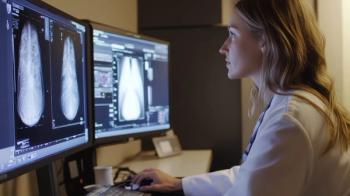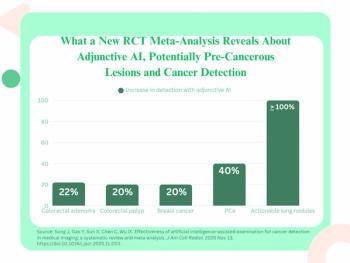
Universal coverage may mean practice changes
It's not too early to look ahead to 2009 and beyond, at least not during an election year in which healthcare financing reform is a major issue.
It's not too early to look ahead to 2009 and beyond, at least not during an election year in which healthcare financing reform is a major issue.
Trying to predict who the next president will be would be a gamble. Much safer is the bet that significant changes to how healthcare is financed in the U.S. will occur regardless of who wins. Whether Democrat or Republican, the next president will preside over dramatic changes in Medicare before the first term is over.
The most significant changes will come from efforts to insure those currently uninsured. If a Democrat is elected, he or she will push for universal coverage--a single-payer system is unlikely. If a Republican is elected, coverage of the uninsured will likely come in a more market-driven approach. Either tactic will result in more insured healthcare consumers.
For argument's sake, let's say 40 million U.S. residents, representing 15% of the population, lack health insurance. What impact will 40 million newly insured patients have on imaging?
If you provide coverage to individuals with no or little cost to them, as with the current Medicare or commercial healthcare policies, utilization will increase. Accordingly, achieving universal coverage will have a direct impact on the volume of imaging, and this volume increase will raise issues until now postponed or ignored by the Centers for Medicare and Medicaid Services.
But does universal coverage mean utilization will increase by 15%? If not, how much will it increase? If you listen to some voices, the uninsured 15% percent of the population would receive care that was previously out of reach, which would indicate a 15% increase in exam volume.
The Blue Cross Blue Shield Association, however, drawing on Census Bureau data, found that a third of the uninsured have family incomes of more than $50,000 per year; 16% have incomes in excess of $75,000 per year. Another third already qualify for Medicaid or some other type of program. Of the remaining third, many go without health insurance for only a brief period.
These statistics would indicate that many uninsured U.S. residents are uninsured intentionally and are not currently being deprived of care. Although this is risky, they feel that it is cheaper to be uninsured than to pay for coverage. This reading of the numbers would indicate a much smaller increase in exam volume from universal coverage. Even an increase in the 5% to 7% range, however, is significant in an industry already in CMS's crosshairs for its 15% to 20% growth rate.
LOWER REIMBURSEMENT
How will universal coverage be paid for? Its promoters say it will cost roughly $100 billion. Some of this will come from a tax increase and some from reallocation of current spending; roughly $35 billion is already being spent on uninsured patients. If these sources will not cover the cost, you can bet CMS will lower reimbursement per case. Accordingly, downward pressure on reimbursement will intensify over the next five years.
Under the current methodologies, Medicare payments to physicians are modified annually using the sustainable growth rate formula. The SGR ties annual expenditure targets to the economy and has indicated negative payment updates over the past several years. Only congressional action has averted these cuts. The statutorily required five-year review process cuts the relative value of services as well.
The first side effect of higher utilization from universal coverage will be new pressure to replace or revise the SGR formula.
Early in 2007, the Medicare Payment Advisory Commission issued a special report to Congress that offered two alternatives for controlling physician expenditures under Medicare: repeal the current SGR formula without replacing it with a new expenditure target or find a new expenditure target system. Look for a permanent fix to the SGR formula along with lower reimbursement per exam.
There's nothing novel about increased volume and lower per-case reimbursement. Imaging has been dealing with these for years, but by now most, if not all, of the efficiencies have been achieved. In a busy practice, where the radiologists are currently working at capacity, this combination means more work at a lower per unit reimbursement-in plain terms, a pay cut. But in a practice or imaging center that is covering variable costs and has capacity, this new source of volume and revenue may be welcomed.
DEFICIT REDUCTION ACT
The impact of the Deficit Reduction Act means many imaging centers are starved for more volume. The financial equation is different when it is hard assets, rather than human labor power, that must be paid for. An increase in revenue from a rise in utilization is just what many imaging centers need to keep their doors open, so this side effect will be a double-edged sword.
On the plus side, the amount you are currently writing off as bad debt would be collected from this new coverage. So within your practice, the downward pressure on fees will be offset to some extent by a reduction in bad debt. Assume a hypothetical radiology group bills 350,000 exams per year and has an average gross collection percentage of 33%, average charge per procedure of $110, and 5% bad debt. The annual bad debt write-off would be $1,925,000. A collection agency would collect 5% to 7% of the amount written off, or $96,250.
If universal coverage provides benefits for these patients, the practice's collection should increase from $96,250 to $635,250 for a net annual increase of $539,000 or $1.54 per procedure. This shift will affect imaging centers to a lesser extent because they typically have less self-pay and less bad debt.
SELF REFERRAL
By putting more financial pressure on an already financially constrained program, CMS and Congress will be forced to reevaluate all possibilities to reduce utilization during the fight to pass universal coverage. One big factor that contributes to overutilization and unnecessary costs is self-referral. CMS has avoided this politically charged hot potato for years.
CMS is now being forced to address the issue, and the first rules on the topic may be out before year end. One of the areas in the Office of Inspector General's 2008 workplan indicates the OIG will evaluate "relationships among physicians, billing providers, and others who work together to provide imaging services and determine whether these relationships affect levels of utilization. We will pay particular attention to financial relationships among the parties involved in providing services and identify whether such relationships are associated with high use of services."
COMPLEX FIX
If these new rules do not go far enough to address the issue completely, look for a complete fix, similar to what many states have enacted or are considering, during the fight to pass the final universal coverage legislation.Maryland is considered a leader in addressing self-referral overutilization. A county circuit court in Maryland has recently upheld a 1993 statute that strictly bans nonradiologists from referring patients within their practices for CT, MRI, and radiation therapy services. (Texas is considering similar legislation.) The decision affirms similar interpretations made by the Maryland Board of Physicians and the state attorney general in 2006 and 2004, respectively. This will mean lower utilization in total, but increased utilization for radiologists.
These changes and some unforeseen consequences of these changes will lead to a more regulated healthcare system in the next several years. All this will cause CMS to intensify efforts to enact or expand existing initiatives, such as targeting geographic areas with a high density of independent diagnostic testing facilities, and the application of physician reassignment of benefits rules.
The coming years will be very interesting for radiology. If universal coverage is achieved, it will guarantee continued downward pressure on rates, increase radiologist workload due to added coverage and antiself-referral regulations, and decrease bad debt. There will be a ripple effect in related regulation, increasing the urgency of programs still in their infancy.
When planning long term, it would be wise to consider the impact of these changes.
Mr. Reinitz is president and CEO of Advocate Radiology Billing & Reimbursement Specialists in Powell, OH.
Newsletter
Stay at the forefront of radiology with the Diagnostic Imaging newsletter, delivering the latest news, clinical insights, and imaging advancements for today’s radiologists.



























